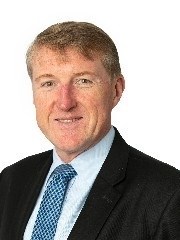 Photo by Fusion Medical Animation
Photo by Fusion Medical Animation
Sara Benwell: In times of market disruption – what are some of the biggest operational challenges faced by institutional investors?

Gerard Brown: Efficiency levels of operations and operating procedures can be tested as a result of exponential volume and demand. Cost driven operating models that are capacity restrained tend to lack flexibility in responsiveness.
Those wanting new or greater bespoke information, or reporting can then be put at a disadvantage in order to make time critical decisions as systems and people struggle to cope.
This demand for data, which increases during times of market dislocation, can be risked rated for extreme events that are found commonly in front office investment-related risk modelling teams.
"Efficiency levels of operations and operating procedures can be tested as a result of exponential volume and demand"
Points of failure can be exposed at critical times, leading to delays, increased stress levels and poor customer / staff experience.
Outsourced / offshore providers based on high touch models can be particularly exposed, if infrastructure or digital responses are not adequate.
Offshoring models may also have addition challenges around national infrastructure or geographical regions being able to cope with heightened demand.
Sara: What is the role of people, processes and technology in creating the optimal operating infrastructure to overcome these challenges?
Gerard: The importance of collaboration and innovation across teams and with external partners is critical to ensuring high levels of service for members / customers is maintained.
At times of market dislocations, the key relationships that have been previously built can prove invaluable in ensuring that people and systems aren’t overwhelmed and grind to a halt. Transparency and clarity in communication also ensures that the plans you’ve put in place are effectively executed.
Similar to investment risk oversight models, operating models need to be stressed tested and have developed fail over plans particularly around key inflexion / flexion points.
"The key is look beyond what we’ve always done to what we’ll potentially need innovative solutions for."
From a people perspective, operational professionals should be working collectively where possible to predict and resolve challenges in the interconnectivity between market participants to limit impacts (as we saw across other industries such as health) and understand system limitations.
The key is look beyond what we’ve always done to what we’ll potentially need innovative solutions for. This involves both a mind-set shift and leadership to identify different skill sets needed in an operating team who are not constrained by process driven problem solving.
Sara: What are key lessons learnt from the pandemic that will help you strengthen the resilience of your operating environment?
Gerard: That you should regularly looking at how you can strengthened operational and ongoing due diligence with suppliers around their extreme risk scenario planning and testing.
There should be a regular agenda items when you’re having B2B discussions focused on resilience, and not only around systems but also people and processes because it’s all under stress in major market events.
It’s also prudent to be constantly questioning capacity and identifying processes or teams that are critical in a crisis and how they can be supported.
"We’re all undertaking a huge leap into the unknown when it comes to what work will look like in a post COVID world."
This thinking needs to be extended to partners and or suppliers who you may need to provide additional support to meet short-term scenarios.
We’re all undertaking a huge leap into the unknown when it comes to what work will look like in a post COVID world.
Traditional BCP / Disaster recovery sites may not be practical options in a world of socially distanced work spaces and, so remote working/cloud storage and access, and digital workforces supplement those plans.
Please Sign In or Register to leave a Comment.
SUBSCRIBE
Get the recent popular stories straight into your inbox




